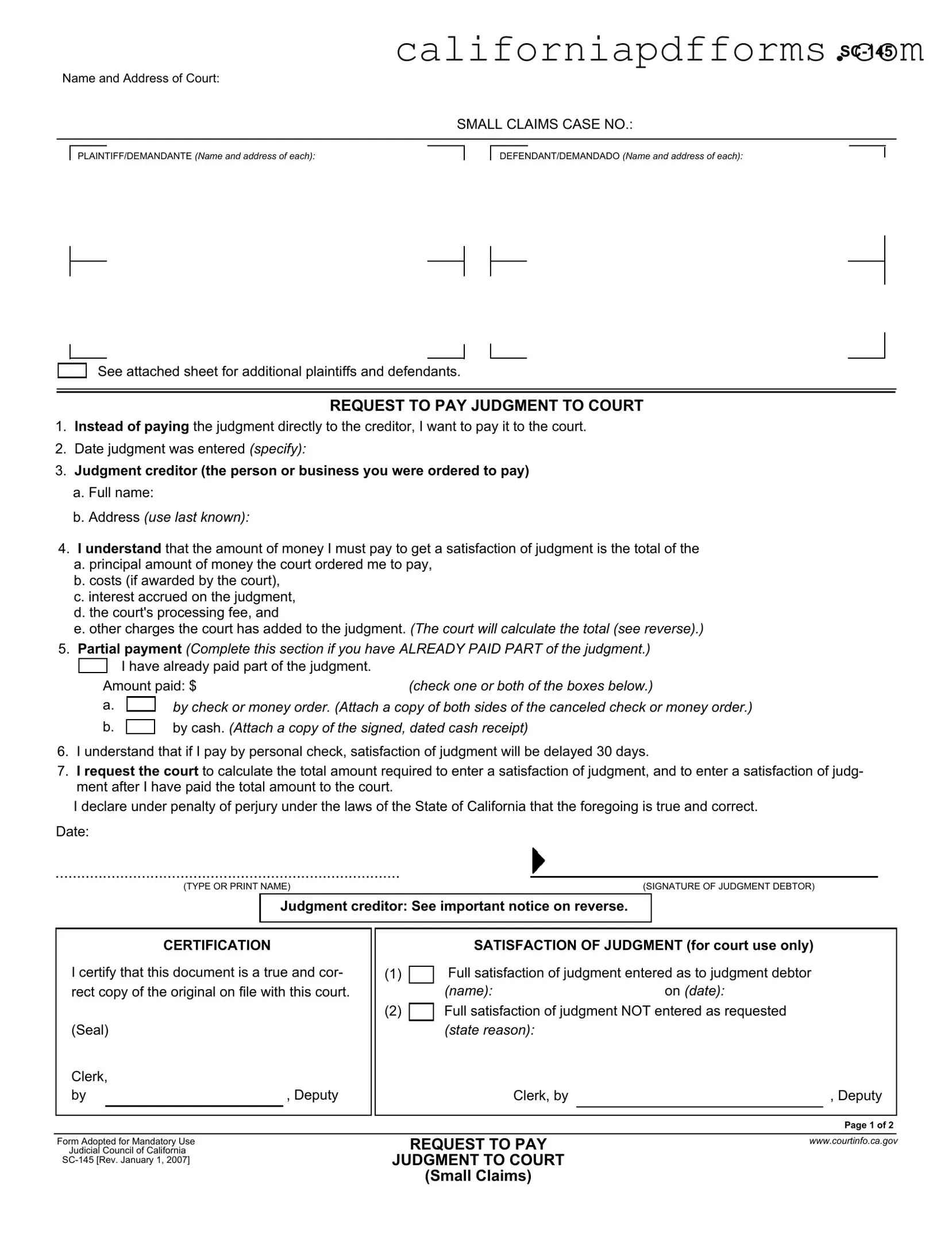The California SC 145 form is used to request that a judgment debtor pays their court-ordered judgment amount directly to the court instead of the creditor. This process allows the court to handle the payment and ensure that all financial obligations are properly recorded and satisfied.
The SC 145 form should be completed by the judgment debtor, the individual or entity that has been ordered to pay a judgment. This form is specifically designed for small claims cases in California.
The form requires several pieces of information, including:
-
The name and address of the court.
-
The small claims case number.
-
The names and addresses of both the plaintiff and defendant.
-
The date the judgment was entered.
-
The name and address of the judgment creditor.
-
The total amount to be paid, including principal, costs, interest, and any processing fees.
What if I have already made partial payments on the judgment?
If you have already paid part of the judgment, you must indicate the amount paid on the SC 145 form. You will also need to provide proof of payment, such as a copy of a canceled check or a signed cash receipt.
How does payment by check affect the satisfaction of judgment?
If payment is made by personal check, the satisfaction of judgment will be delayed for 30 days. This delay allows time for the check to clear before the court officially recognizes the judgment as satisfied.
Once the SC 145 form is submitted, the court will calculate the total amount required to satisfy the judgment. After the debtor pays this total amount, the court will enter a satisfaction of judgment, indicating that the debt has been fulfilled.
What should I do if I am the judgment creditor?
If you are the judgment creditor, you will receive a notice from the court once the judgment debtor has made the payment. You can claim the funds by either presenting the notice in person to the court clerk or mailing it to the court. Be aware that unclaimed funds will become the property of the court after three years.
There may be a processing fee associated with the payment made through the court, but the SC 145 form itself does not typically require a separate filing fee. It is advisable to check with the specific court for any additional charges that may apply.
The SC 145 form can be obtained from the California courts' official website or directly from the small claims court where your case is filed. It is important to ensure that you are using the most current version of the form.
